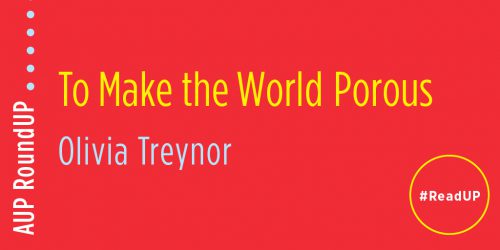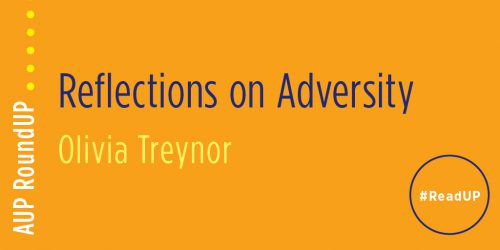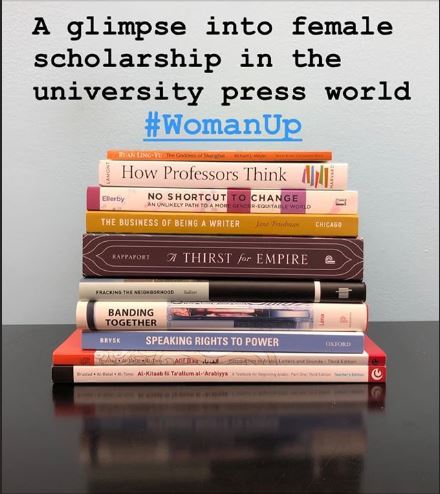This Must Be the Place by Olivia Treynor

After recently going to a concert for the first time since the onset of the pandemic, I’ve been thinking a lot about physical space. It’s what allows us to gather, but it’s also something with history, an opportunity for artistic expression, and the subject of some fascinating and truly varied UP blog posts. Haunted houses, subway cars, green buildings in the Midwest: today’s installment is an expansive discussion of what physical space is and how it changes us as we change it.
Rashmi Sadana, author of The Moving City, urges us to think about the “social lives of public transit”; that is, how does the thing that allows us to move between spaces exist as an influential and discrete space unto itself? Even Sadana’s title, the “moving city,” suggests that metro lines represent not the connective tissue of a city but a particular environment of the city.
Sadana’s piece largely focuses on a woman she interviewed for her book, whom she calls Vanita. Vanita “had started taking the Metro when her husband left her, and took their car with him.” Sadana writes of how she was “struck by how [Vanita] narrated her story of personal loss through the transport landscape.” Indeed, the way that the evolution of a relationship can be illustrated through vehicles—the change from car to subway—suggests how location is both a consequence of humans and a consequential force of its own.
Further developing the ways in which spaces exert influence on us, Sadana asks: “How does transport affect our own attentiveness to the world around us—whether we are in a bus in loud, bumpy road traffic or in an enclosed, automated subway car? How do the sounds, stops and starts, and feel of transport affect our way of life and what we expect and hope from our urban existence?”
This blog post begins with the phrase: “America is haunted.” This provocative articulation prompted me, perhaps as a consequence of the autumnal chill in the air, to think of America as a kind of haunted house, that is, a space that has lingering histories, unsolved and unquenched, that demand our attention. As Robert Cozzolino, curator of the Supernatural America exhibition puts it, “The uprisings in the wake of more murders of Black people made it clear that the ghosts of the past are emphatically present, demand to be dealt with and will not rest until they have been seen and honored.”
Discussing art by practicing mediums in the spiritualist church, Cozzolino describes the artist Agatha Wojciechowsky, “who disavowed responsibility for their art, but asserted that it was the work of spirits that entered their bodies to make the work or write messages.” The artist’s body is a space that can be occupied, a haunted house.
Donald Edward Davis, author of The American Chestnut, presses us to think about living beings as places, too, with inherited histories, symbolic meanings, and evolving roles. The site Davis is interested in is revealed in his book’s title: the American chestnut tree. Davis writes that “for residents of Appalachia, where the trees defined the pre–World War II landscape, the loss of the American chestnut also served as a metaphor for the passing of a self-sufficient and forest-dependent way of life.” Here, it is the space left in the wake of the chestnut tree that is of significance; the space is defined by absence. The transition from a rich forest environment to a landscape devoid of chestnut trees represented a profound change, a new space that held a memory of its old occupants.
Davis writes that “the tree had a truly indelible influence on American culture.” Citing examples from holiday treats to building transportation and communication networks, Davis lays solid ground upon which he claims that “perhaps no other tree species had influenced American life in this way.” Davis also recognizes the relationships that existed between Indigenous groups such as the Cherokees and Haudenosaunee before colonization, writing that “during the Early Woodland period, [Native Americans] intentionally inhabited areas where the trees were abundant and cached large quantities of chestnuts in underground silos.” In this way, the chestnut tree shaped human life on this continent for millennia, proving the durability of spaces and the environmental nature of the strata of history.
On a final note, the University of Illinois has featured a series—or rather, a tour, as they’ve called it—highlighting Chicago’s outdoor or “green” spaces. This three-part guide encompasses spaces as diverse as a nature boardwalk and a home with a butterfly roof, giving a glorious glance at the environmentally conscious and immersed architecture of the windy city.
Until next time.







